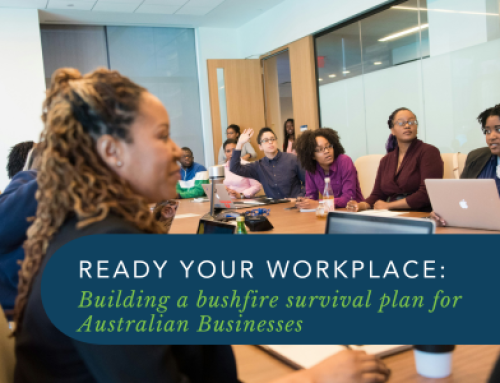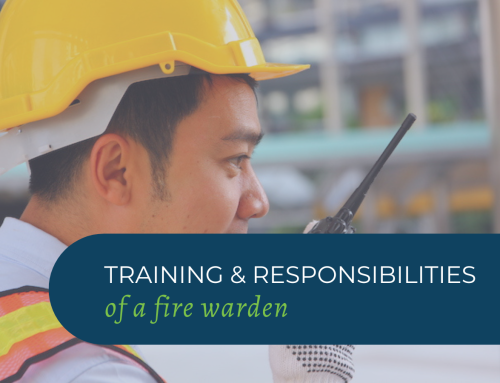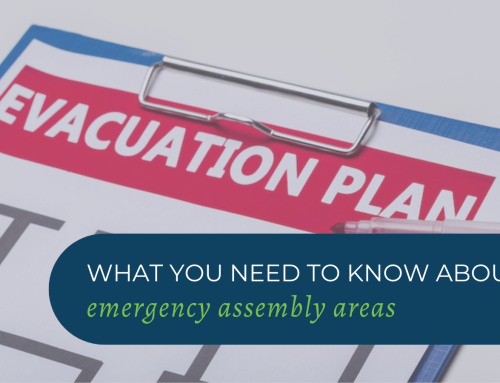The number one priority in any emergency is always people’s safety. Is the job of warden team done once everyone is safely out of the building or is there more that we should be looking out for?
There are some important things that we need to keep in mind once everyone is safely out. Remember that there are two main things that we need to achieve in the initial phase of any evacuation.
First and foremost is to ensure that everyone leaves the building as quickly and as safely as possible. All personnel should be guided by the designated wardens as to which exit to leave from. No two emergencies are the same and it is crucial to have the big picture in mind wherever possible before directing people. For example, if the fire is at the front of the building, clearly, we would not want everyone evacuating through this path. In an ideal world, the Chief Warden will be able to quickly establish where the source of the emergency is, and this will inform the directions given by the rest of the warden team. This also means that in this instance, if the main assembly area is directly in front of the building, then an alternative muster point should be chosen, and directions given to gather there instead.
So, we have managed to get everyone one out of the building. This is and should be the main priority. The entire building should be checked, and everyone marshalled out through the nearest safe exit. Most people will exit through the same door that they usually enter the building from. Evacuation exercises show this up time and time again. It goes to show the importance of conducting drills and the critical role that communication and clear direction from wardens can make.
The other vital thing we need to do after everyone has safely left the building is to account for everyone. That includes all staff, contractors, customers and visitors.
The first thing that the fire brigade will do on arrival is to ask if everyone is out of the building. It is vital that the Chief can relay clear and accurate information. It could be that someone has declined to evacuate, or someone is still inside, injured and/or trapped.
As soon as the Fire Brigade arrives, they will take over command of the emergency. It is important to never turn the alarm off until the Fire Brigade arrives. It will then be their site and their responsibility. Clear notes should be taken which will help with the hand over and subsequent reporting after the event.
Let’s look at ways of making sure everyone is accounted for. Ultimately everyone needs to be directed to the main assembly area for their organization. This should be clearly marked with a green sign and marked on all Evacuation Diagrams. Again, there may be more than one Assembly Area and a call can be made by the chief warden at the last minute as to which is the most appropriate given the circumstances.
Once everyone is at the Assembly Area a more thorough count of everyone should be conducted. This should be overseen by the deputy chief warden and not the Chief. The chief warden should remain at the Emergency Control Point or place where the emergency services can easily locate them.
We should also have a First Aid Warden present at the Assembly Area. They should be clearly identifiable with a green cap or hard hat, and their kit.
A robust system should be in place to account for everyone. This could be taking sign in sheets to assembly area, visitor sign in sheets or other methods of tracking who is in the building on that day.
Is there are a system to determine if staff are at lunch or out of the building temporarily?
Whether it is in electronic form or on paper, this list should be used to check that everyone is indeed counted. Then this information should be relayed immediately to the chief. A system needs to be in place and rehearsed as to how the information is relayed to the chief. Will it be by two-way radio, mobile phone or other means?
The emergency services will make a call as to if the building is safe to return to. The deputy or warden at the Assembly Area will instruct everyone to either return to work in the event of a false alarm, or it maybe that everyone is sent home if the building is not deemed safe.
It is important to note that no one is to enter the building through any of the doors once an alarm has been raised or during an evacuation. Doors should be closed as part of the evacuation procedure. It is amazing that even though alarms could well be ringing and people gathering and even fire trucks being on site that people will believe it or not, try to enter just like nothing happened.
A system needs to be in place as well to ensure that no vehicles enter the grounds once an evacuation has commenced. This includes delivery vehicles, couriers, customers and staff.
We also don’t want vehicles driving out if possible. This could serve as a danger to what could be a large gathering in the carpark and could even obstruct emergency services vehicles trying to enter the car park.
The best way of seeing firsthand what issues may arise in the event of an evacuation is to perform regular evacuation exercises. This will aid in refining systems, discovering what could be improved and show up gaps in your procedures.
The best way to deal with an emergency is to prepare for an emergency. The team at WEM can provide training for your warden team and facilitate evacuation exercises which could lead to saving lives.
GET IN TOUCH
Are you ready for peace of mind that your workforce is as safe and prepared as possible?
With a dedicated team of staff ready to help you meet compliance requirements and improve the overall safety of your workplace, all you need to do is get in touch.
Request your free audit today!



